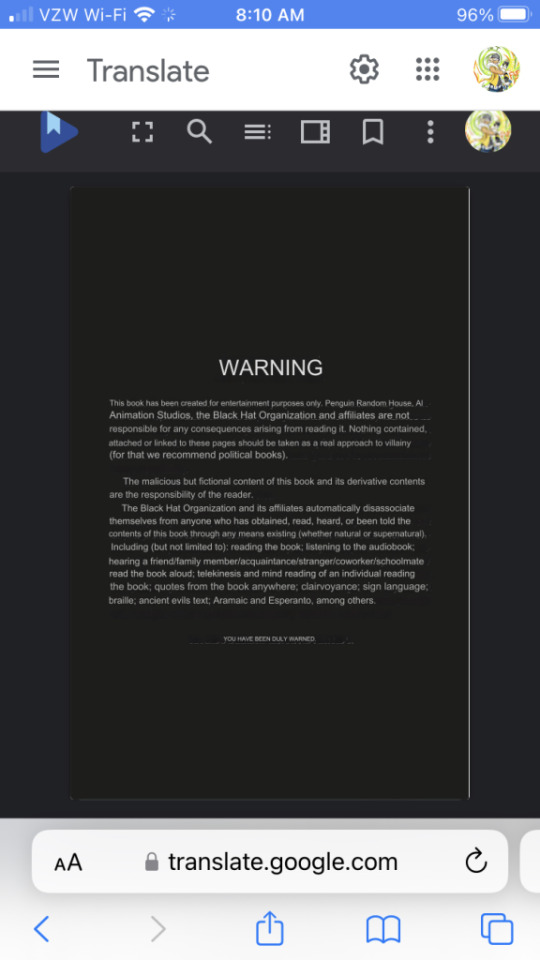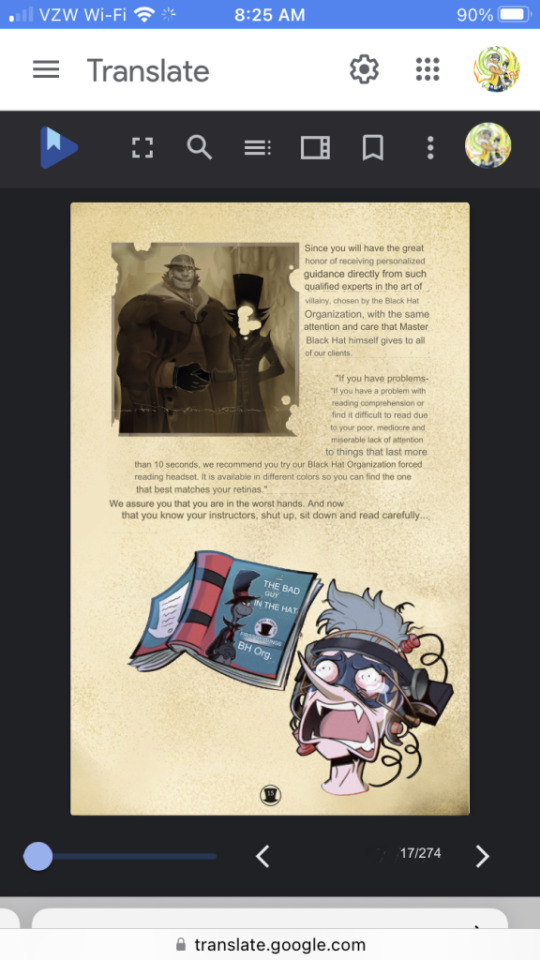#organizing manual
Explore tagged Tumblr posts
Text
when it comes to voting
It's time to stop relying on political machines and staffers to do the work and act like organizers. Anyone and everyone can do it, but it's important to remember that if you want to move someone from INACTION to ACTION, the biggest influence on that person's behavior is going to be a personal relationship with strong rapport.
That means you.
Make a list of your contacts. ALL your contacts, including the annoying ones. Online and offline. Your neighborhood. Everyone who could roughly be called your monkeysphere. Your target is a list of 10 - 300 people who you have some ability to contact.
Next, power-mapping.
Who knows who? Who influences who? Who is in a friend group together? Chunk them up into key groups. Try to find a person in every group who you think could influence others, and who you could also influence. Identify people in powerful positions.
Do you have friends who have more influence in their particular friend groups than you? Do you have friends who you might be able to convince to go to a protest with you?
It's time to agitate, which means targeted asks. Get your identified influencers, people who already want to be engaged in politics, who will vote but won't do more yet (in unions, we call these "strike captains") to say "yes" to actions such as: protesting, spreading the word, joining a project like Sister District, registering people to vote, as you are able. If they say no, that's fine. Let them cool off, rebuild the relationship stronger, and ask again.
Ask people to ask people, specific people who you know they know, to vote. Check in a couple weeks later to ask about what so-and-so said.
You can't do all of this yourself. Organizing means pulling other people in and sharing responsibility. Your goal is to spend as little time "in charge" as possible.
Document barriers to voting and organize mutual aid to cover those barriers. This may mean helping people pay for their IDs, driving people to the polls, etc. The likely fact is that if you know 50 - 100 people you probably know some people who have some resources and some people who are going to need some help. Connect these people to each other.
Leave the hard no's, the ones who want nothing to do with politics whatsoever, alone and focus on influencing as many people as you can around them. You might be surprised at the outcomes you can achieve.
Something that's worked for me, but YMMV: if anyone asks, you aren't agitating and you aren't organizing and you definitely aren't a leftist of any type. You're a centrist leaning slightly conservative with neutral values (smile). You don't care about specific outcomes, you just want the election to be representative of people's views. You want to get young people involved in "something." It's important to participate in democratic traditions.
Make a timeline of 3 months or so leading up to the election with concrete, achievable goals every week. Your goal is to flip as many of your targets to a. VOTE and b. ORGANIZE their own monkeyspheres. Use gentle peer pressure: "I know so-and-so registered to vote lately, have you? Do you need help?"
Don't forget to remind people of both a. the stuff that pisses you off and b. what you hope to win. Without hope ya got nothing.
Don't use regurgitated lines or scripts; come up with your own motivations, your own way of saying things. The less you sound like you're working for the democratic party, the better.
Here's the money line that got my famously "neutral" and "apolitical" turf of 200 to swing active and anarchist: "No, I'm not going to tell you how to vote. That's your business. Check the issues and see what you think. I just want you to vote in the strike authorization. Don't you think our group should get a say in the outcome?"
5 notes
·
View notes
Text
It's time to stop relying on political machines and staffers to do the work and act like organizers. Anyone and everyone can do it, but it's important to remember that if you want to move someone from INACTION to ACTION, the biggest influence on that person's behavior is going to be a personal relationship with strong rapport.
That means you.
Make a list of your contacts. ALL your contacts, including the annoying ones. Online and offline. Your neighborhood. Everyone who could roughly be called your monkeysphere. Your target is a list of 10 - 300 people who you have some ability to contact.
Next, power-mapping.
Who knows who? Who influences who? Who is in a friend group together? Chunk them up into key groups. Try to find a person in every group who you think could influence others, and who you could also influence. Identify people in powerful positions.
Do you have friends who have more influence in their particular friend groups than you? Do you have friends who you might be able to convince to go to a protest with you?
It's time to agitate, which means targeted asks. Get your identified influencers, people who already want to be engaged in politics, who will vote but won't do more yet (in unions, we call these "strike captains") to say "yes" to actions such as: protesting, spreading the word, joining a project like Sister District, registering people to vote, as you are able. If they say no, that's fine. Let them cool off, rebuild the relationship stronger, and ask again.
Ask people to ask people, specific people who you know they know, to vote. Check in a couple weeks later to ask about what so-and-so said.
Document barriers to voting and organize mutual aid to cover those barriers. This may mean helping people pay for their IDs, driving people to the polls, etc. The likely fact is that if you know 50 - 100 people you probably know some people who have some resources and some people who are going to need some help. Connect these people to each other.
Leave the hard no's, the ones who want nothing to do with politics whatsoever, alone and focus on influencing as many people as you can around them. You might be surprised at the outcomes you can achieve.
Something that's worked for me, but YMMV: if anyone asks, you aren't agitating and you aren't organizing and you definitely aren't a leftist of any type. You're a centrist leaning slightly conservative with neutral values (smile). You don't care about specific outcomes, you just want the election to be representative of people's views. You want to get young people involved in "something." It's important to participate in democratic traditions.
Make a timeline of 3 months or so leading up to the election with concrete, achievable goals every week. Your goal is to flip as many of your targets to a. VOTE and b. ORGANIZE their own monkeyspheres. Use gentle peer pressure: "I know so-and-so registered to vote lately, have you? Do you need help?"
Don't forget to remind people of both a. the stuff that pisses you off and b. what you hope to win. Without hope ya got nothing.
Don't use regurgitated lines or scripts; come up with your own motivations, your own way of saying things. The less you sound like you're working for the democratic party, the better.
Here's the money line that got my famously "neutral" and "apolitical" turf of 200 to swing active and anarchist: "No, I'm not going to tell you how to vote. That's your business. Check the issues and see what you think. I just want you to vote in the strike authorization. Don't you think our group should get a say in the outcome?"
Forever thinking about how, on election day in 2016, I wore a shirt with an American flag on it because it was what was clean. And the 20-ish year old bagging my groceries made a snide remark about it, followed by 'I didn't vote, they're all the same anyways.' And a fellow grocery worker chimed in agreement that he wasn't voting for the same reason.
And now I can't go to a local drag event without having to walk through a gauntlet of nazis.
I realize that the election is a year and a half away, but please don't fall for the 'they're the same' rhetoric this time around. Both candidates will suck, but they'll suck in different ways and one of them wants my community dead.
#vote#reblog please#organizing manual#grassroot the vote#organizing#yours--truly#strike! strike! strike! strike! strike! strike! strike! strike!
43K notes
·
View notes
Text


Turbulent times are upon us. Already, blockades, demonstrations, riots, and clashes are occuring regularly. It’s past time to be organizing for the upheavals that are on the way.
But getting organized doesn’t mean joining a pre-existing institution and taking orders. It shouldn’t mean forfeiting your agency and intelligence to become a cog in a machine. From an anarchist perspective, organizational structure should maximize both freedom and voluntary coordination at every level of scale, from the smallest group up to society as a whole.
You and your friends already constitute an affinity group, the essential building block of this model. An affinity group is a circle of friends who understand themselves as an autonomous political force. The idea is that people who already know and trust each other should work together to respond immediately, intelligently, and flexibly to emerging situations.
This leaderless format has proven effective for guerrilla activities of all kinds, as well as what the RAND Corporation calls “swarming” tactics in which many unpredictable autonomous groups overwhelm a centralized adversary. You should go to every demonstration in an affinity group, with a shared sense of your goals and capabilities. If you are in an affinity group that has experience taking action together, you will be much better prepared to deal with emergencies and make the most of unexpected opportunities.
This guide is adapted from an earlier version that appeared in our Recipes for Disaster: An Anarchist Cookbook.
Affinity Groups are Powerful
Relative to their small size, affinity groups can achieve a disproportionately powerful impact. In contrast to traditional top-down structures, they are free to adapt to any situation, they need not pass their decisions through a complicated process of ratification, and all the participants can act and react instantly without waiting for orders—yet with a clear idea of what to expect from one another. The mutual admiration and inspiration on which they are founded make them very difficult to demoralize. In stark contrast to capitalist, fascist, and socialist structures, they function without any need of hierarchy or coercion. Participating in an affinity group can be fulfilling and fun as well as effective.
Most important of all, affinity groups are motivated by shared desire and loyalty, rather than profit, duty, or any other compensation or abstraction. Small wonder whole squads of riot police have been held at bay by affinity groups armed with only the tear gas canisters shot at them.
The Affinity Group is a Flexible Model
Some affinity groups are formal and immersive: the participants live together, sharing everything in common. But an affinity group need not be a permanent arrangement. It can serve as a structure of convenience, assembled from the pool of interested and trusted people for the duration of a given project.
A particular team can act together over and over as an affinity group, but the members can also break up into smaller affinity groups, participate in other affinity groups, or act outside the affinity group structure. Freedom to associate and organize as each person sees fit is a fundamental anarchist principle; this promotes redundancy, so no one person or group is essential to the functioning of the whole, and different groups can reconfigure as needed.
Pick the Scale That’s Right for You
An affinity group can range from two to perhaps as many as fifteen individuals, depending on your goals. However, no group should be so numerous that an informal conversation about pressing matters is impossible. You can always split up into two or more groups if need be. In actions that require driving, the easiest system is often to have one affinity group to each vehicle.
Get to Know Each Other Intimately
Learn each other’s strengths and vulnerabilities and backgrounds, so you know what you can count on each other for. Discuss your analyses of each situation you are entering and what is worth accomplishing in it—identify where they match, where they are complentary, and where they differ, so you’ll be ready to make split-second decisions.
One way to develop political intimacy is to read and discuss texts together, but nothing beats on-the-ground experience. Start out slow so you don’t overextend. Once you’ve established a common language and healthy internal dynamics, you’re ready to identify the objectives you want to accomplish, prepare a plan, and go into action.
Decide Your Appropriate Level of Security
Affinity groups are resistant to infiltration because all members share history and intimacy with each other, and no one outside the group need be informed of their plans or activities.
Once assembled, an affinity group should establish a shared set of security practices and stick to them. In some cases, you can afford to be public and transparent about your activities. in other cases, whatever goes on within the group should never be spoken of outside it, even after all its activities are long completed. In some cases, no one except the participants in the group should know that it exists at all. You and your comrades can discuss and prepare for actions without acknowledging to outsiders that you constitute an affinity group. Remember, it is easier to pass from a high security protocol to a low one than vice versa.
Make Decisions Together
Affinity groups generally operate on via consensus decision-making: decisions are made collectively according to the needs and desires of every individual involved. Democratic voting, in which the majority get their way and the minority must hold their tongues, is anathema to affinity groups—for if a group is to function smoothly and hold together under stress, every individual involved must be satisfied. Before any action, the members of a group should establish together what their personal and collective goals are, what risks they are comfortable taking, and what their expectations of each other are. These matters determined, they can formulate a plan.
Since action situations are always unpredictable and plans rarely come off as anticipated, it may help to employ a dual approach to preparing. On the one hand, you can make plans for different scenarios: If A happens, we’ll inform each other by X means and switch to plan B; if X means of communication is impossible, we’ll reconvene at site Z at Q o’clock. On the other hand, you can put structures in place that will be useful even if what happens is unlike any of the scenarios you imagined. This could mean preparing resources (such as banners, medical supplies, or offensive equipment), dividing up internal roles (for example, scouting, communications, medic, media liaison), establishing communication systems (such as burner phones or coded phrases that can be shouted out to convey information securely), preparing general strategies (for keeping sight of one another in confusing environments, for example), charting emergency escape routes, or readying legal support in case anyone is arrested.
After an action, a shrewd affinity group will meet (if necessary, in a secure location without any electronics) to discuss what went well, what could have gone better, and what comes next.
Tact and Tactics
An affinity group answers to itself alone—this is one of its strengths. Affinity groups are not burdened by the procedural protocol of other organizations, the difficulties of reaching agreement with strangers, or the limitations of answering to a body not immediately involved in the action.
At the same time, just as the members of an affinity group strive for consensus with each other, each affinity group should strive for a similarly considerate relationship with other individuals and groups—or at least to complement others’ approaches, even if others do not recognize the value of this contribution. Ideally, most people should be glad of your affinity group’s participation or intervention in a situation, rather than resenting or fearing you. They should come to recognize the value of the affinity group model, and so to employ it themselves, after seeing it succeed and benefiting from that success.
Organize With Other Affinity Groups
An affinity group can work together with other affinity groups in what is sometimes called a cluster. The cluster formation enables a larger number of individuals to act with the same advantages a single affinity group has. If speed or security is called for, representatives of each group can meet ahead of time, rather than the entirety of all groups; if coordination is of the essence, the groups or representatives can arrange methods for communicating through the heat of the action. Over years of collaborating together, different affinity groups can come to know each other as well as they know themselves, becoming accordingly more comfortable and capable together.
When several clusters of affinity groups need to coordinate especially massive actions—before a big demonstration, for example—they can hold a spokescouncil meeting at which different affinity groups and clusters can inform one another (to whatever extent is wise) of their intentions. Spokescouncils rarely produce seamless unanimity, but they can apprise the participants of the various desires and perspectives that are at play. The independence and spontaneity that decentralization provides are usually our greatest advantages in combat with a better equipped adversary.
Bottomlining
For affinity groups and larger structures based on consensus and cooperation to function, it is essential that everyone involved be able to rely on each other to come through on commitments. When a plan is agreed upon, each individual in a group and each group in a cluster should choose one or more critical aspects of the preparation and execution of the plan and offer to bottomline them. Bottomlining the supplying of a resource or the completion of a project means guaranteeing that it will be accomplished somehow, no matter what. If you’re operating the legal hotline for your group during a demonstration, you owe it to them to make sure someone can handle it even if you get sick; if your group promises to provide the banners for an action, make sure they’re ready, even if that means staying up all night the night before because the rest of your affinity group couldn’t show up. Over time, you’ll learn how to handle crises and who you can count on in them—just as others will learn how much they can count on you.
Go Into Action
Stop wondering what’s going to happen, or why nothing’s happening. Get together with your friends and start deciding what will happen. Don’t go through life in passive spectator mode, waiting to be told what to do. Get in the habit of discussing what you want to see happen—and making those ideas reality.
Without a structure that encourages ideas to flow into action, without comrades with whom to brainstorm and barnstorm and build up momentum, you are likely to be paralyzed, cut off from much of your own potential; with them, your potential can be multiplied by ten, or ten thousand. “Never doubt that a small group of thoughtful, committed people can change the world,” Margaret Mead wrote: “it’s the only thing that ever has.” She was referring, whether she knew it or not, to affinity groups. If every individual in every action against the state and status quo participated as part of a tight-knit, dedicated affinity group, the revolution would be accomplished in a few short years.
An affinity group could be a sewing circle or a bicycle maintenance collective; it could come together for the purpose of providing a meal at an occupation or forcing a multinational corporation out of business through a carefully orchestrated program of sabotage. Affinity groups have planted and defended community gardens, built and occupied and burned down buildings, organized neighborhood childcare programs and wildcat strikes; individual affinity groups routinely initiate revolutions in the visual arts and popular music. Your favorite band was an affinity group. An affinity group invented the airplane. Another one maintains this website.
Let five people meet who are resolved to the lightning of action rather than the agony of survival—from that moment, despair ends and tactics begin.
#affinity groups#anarchist organization#how-to#guides#and manuals#anarchism#anarchy#anarchist society#practical anarchy#practical anarchism#resistance#autonomy#revolution#communism#anti capitalist#anti capitalism#late stage capitalism#daily posts#libraries#leftism#social issues#anarchy works#anarchist library#survival#freedom#crimethinc
244 notes
·
View notes
Text

"She desires only companionship, but the only thing she knows is how to hurt."
#slay the princess#slay the princess art#slay the princess fanart#stp princess#slay the princess nightmare#slay the princess spoilers#stp nightmare#slay the princess moment of clarity#stp moment of clarity#here comes the specialest girl in the world and if u dont clap i will manually fail your organs#i am very normal about her#art#fanart#drawing#krita#kritaart#sketch#my art#stp fanart#stp art
373 notes
·
View notes
Text

Hice unos wallpapers xd

#villainous#villainous cn#villanos#villanos cn#vilanesco#dr flug#black hat#vilanesco cn#manual para villanos#black hat organization#alan ituriel
137 notes
·
View notes
Text
I agree, this is the correct interpretation of the situation. Go buy tickets, stream, etc. everything that you're interested in and would normally consume, but when we see the big quality drop in a couple of months, change your consumption according to how you really feel.
More than that: does anyone remember the general mills strike a few years ago? People vocally complained in public on Twitter about the drop in quality of e.g. cornflakes, with supporting photographs, and said that they would not buy the product due to it not being worthwhile anymore. That was extremely effective. It wasn't a boycott, it was a clarification to the company that their strikebreaking tactics were not going unnoticed on the consumer end.
Doing some productive complaining when we feel like it could be helpful.
"Man, those Barbie interviews were so fun, I really wish the studios would come to terms so we could be entertained like that again. The actors are really talented and should be compensated fairly."
"Man, it's too bad that Hollywood is pushing such bad and unreasonable AI policies, it's their fault we're missing Sandman. I'd really love to see that; I'm not so interested in this reality TV stuff."
"Man, I sure love Star Trek and I only got a Paramount+ subscription in order to watch it. I hope they settle with the striking workers' demands soon or I'm gonna have to cancel because there won't be anything to watch."
Make whatever your decisions are here very public. Boost strike content and Tiktoks from your favorite actors whenever you see it. It's less about their bottom line and more publicly showing your allegiance.
Put the responsibility for the strike on the shoulders of the execs and clarify to them that while you want to consume their product--and therefore they should care about your opinion--but that you are invested in a certain level of quality for that product, and want a good contract so that the shit they put out is worth your dollar.
Be aware that it is likely the companies will pay strikebreakers to say the absolute worst shit about the strike and the strikers in order to break morale and make it sound like it's coming from People Like You, their fans. It's very, very, very important to help the union maintain solidarity because holding onto morale is going to become extremely tough at a certain point. That's the point where your vocal enthusiasm for the strike, and potentially some $$$, is going to be critical.
Keep your powder dry. We aren't there yet.
But when that time comes, this isn't just about your faves or an abstract progressive cause. Back the labor movement and down the line it will help you put a dollar in your pocket, even if you have a non-union workplace. Tired of price gouging? Ridiculous scheduling? Low wages?
If we get a strong Teamsters or even railroad strike, stuff is gonna change in this country. But we need to show folks that it's possible and that we're willing to invest in labor. Successful strikes inspire more strikes. Support the long strike, show 'em how it's done, show all the other unions that they can count on the community.
(also, if you're bored, unionize your workplace. It feels like you're the star of a spy movie or a member of the Resistance and is one of the most badass things you could possibly do)
(also also, if that's a bad idea right now... don't you think it's time to make the union organizer AU as mainstream as the coffee shop AU, regency AU, and the high school AU? If you're missing your show and want to support the strike, why not do some detailed research and stretch a little? I promise it's one of the most psychologically interesting and stressful and funny situations you could possibly put your faves in, PLUS you're doing an educational service to the community. Why not??)
I’m curious as to where you all stand
Reblog for demographics!
#strike! strike! strike! strike! strike! strike! strike! strike!#unions#the long strike#wga#sag aftra#do the write thing#union organizer au#yours--truly#organizing manual
30K notes
·
View notes
Text
crude google eng scans of villainous manual for villains (intro)













this is just a small free taste. please support the official release as piracy is fine but cheating lord black hat out of money by posting free scans online is a no-no. . .unless you want more in which case i'm a dead man anyways for doing this so let's post!
#villainous cartoon network#villainos#villanos#villainous#black hat#black hat organization#villainous book#manual for villains#villainous manual for villains#english translation#spoilers#villainous spoilers#my post#support the official release
43 notes
·
View notes
Text
Black Hat Is Going On Another Tour

Gotta keep promoting villainy in every way and have people know the word.
30 notes
·
View notes
Text
sometimes I remember my first few months as a writer here and start cringing because wtf was i on
#. . mail#the uncoordinated theme#AND MY THEMES WERE WAY TOO EXCESSIVE#i love it now tho#its so organized even tho i had to change all the links manually#when i changed names like 3 times lmfao
90 notes
·
View notes
Text

The infamous Sh'Rann, our beloved rural space vulcans' home, picture taken with the cordial autorisation of Captain Spisee.
I'm really happy to illustrate the Sh'Rann of @android-and-ale, if you haven't started yet, you can read their fic here.
This was a challenge to me for several reasons, for example: I never drew a single spaceship before, but I had so much fun drawing this welded nightmare! It was a blast! So, I hope you'll like it <3
#star trek#star trek fanart#spaceship#my art#sh'rann#vulcan spaceship#welded to#nausicaan spaceships#don't get me started on perspective alright#I know where I'm at#and I'm more of an organic artist#if you know you know#but really#so FUN to draw this#maybe I'll draw more spaceships soon#as usual with an absolute lack of respect of accuracy#watch me make several hours of deep deep dive#searching alpha beta canon manuals and stuff#and go with the flow in front of my tablet#canon is a bitch#and I can be a bitch too
48 notes
·
View notes
Text

Marisela reading the new book "Manual para Villanos de Black Hat Organization" 🎩😈📖💀🌹🏵️🌸🖤💙💜♥️
💀💀♥️♥️♥️
#villainous#villanos#oc#villainous oc#villainous x oc#mari#marisela#villainous au#villainous cartoon network#manual para villanos#black hat organization
15 notes
·
View notes
Text
Imagine the pain a "Unit" being repaired must feel, as mechanical claws rifle through their internal organs, altering them, or even replacing them entirely, all without any anesthesia, only a single muscle relaxant to keep them from protecting their insides from being converted!
#whump#whumpblr#whump community#my whump#cyborg whump#non consensual body modification#user's manual verse#user's manual whump#surgery whump#cw surgery#organ whump#cw: gore#gore#gore whump
11 notes
·
View notes
Text
i'm still so flabbergasted that the story clangen generated for the hfjone run was everyone dying one by one in increasingly gruesome ways until bryce was the only one left, and then kept him alive until he died of old age
#fptext#he didnt even lose any lives#if i hadnt manually retired him he wouldve had to die of organ failure 9 times 😭
7 notes
·
View notes
Text
finally got a job & then my car's engine immediately started smoking on the way home from meeting my supervisors & filling out tax paperwork. 🫠
#ctxt#well i got the job earlier this week but bc this dumb organization does things backwards#it wasn't until today that i confirmed that yes actually things are proceeding as normal & i should start in ~2 weeks#had to get my dad's help to limp my car to the fucking mechanic tho while he drove behind me to make sure nothing caught on fire#fingers crossed that it's just a coolant leak from a busted hose or something cuz i cannot afford any major repairs rn#i'm excited thoooo this'll be my first job in uuuuhhhhh 9 years? that isn't retail sales customer service or food service#it'll be more manual labor than i'm used to so sending up a prayer that my body will be able to handle it#but holy shit i get to more or less choose how many days i work and i just get to spend all day#organizing pieces of paper & then going around town putting them in various locations#it sounds like the dream#charlie vs mail
18 notes
·
View notes
Text

Abolishing Capitalism
None of these options are long-term solutions. We live in a civilization based on the separation of society into haves and have-nots. This cannot be allowed to continue.
The entirety of potential political and social structures don’t balance on the axis of capitalism (and democracy, somehow always lumped with capitalism) and state communism. Capitalists would love for you to believe that, of course, because state communism is so clearly a terrible idea; they would love for people to think capitalism is the only alternative to Stalinist atrocity.
Capitalism is an atrocity, however, as a quick survey will let us know. Capitalism (the idea of not working for your money, but instead siphoning the wealth produced by others) has led us to the very brink of planetary ecocide with its mindless search for profit (a feature included even in the dictionary definition!).
Many people have theorized ways of eradicating the rampant criminality of capitalism. Socialism isn’t actually a dirty word, and can mean a whole host of things, many of which are as far from Stalinism as a system could possibly be.
But the simplest one is this: we, as small communities (often overlapping ones), can make decisions for ourselves by the means we best see fit. We can feed and care for ourselves and each other. We can work in ways that make us happy, we can work for projects that actually concern us. If we don’t let the ruling class rule us, we won’t be ruled. If you ask me, I’d call this system anarchism. Other people might call it different things like autonomism or horizontalism or just decentralization, direct democracy, or common sense.
But in order to do this, we have to take back the means of production. The rich have the things they have because they are dirty stinking thieves, whether they know it or not.
just a friendly word from some anarchists
#direct action#how-to#guides#and manuals#illegalism#theft#workplace struggles#community building#practical anarchism#anarchist society#practical#mutual aid#grassroots#organization#anarchism#resistance#autonomy#revolution#anarchy#daily posts#communism#anti capitalist#anti capitalism#late stage capitalism#grass roots#anarchists#libraries#leftism#social issues#economics
22 notes
·
View notes
Text
- Primordial SMP is now titled Home Is Where You Are -
@cookieg122 and I finally decided on a name for this story we've been working on together for a few years now!! it had started out as a simple recounting of events that took place within two separate Minecraft servers a few years back, but since then we've come up with a lot of our own content, and we figured it was best to call it by an original title to try to separate that original content from its MC ties so it can stand alone as its own thing, too.
Hence why we're dropping the SMP (i.e., "survival multiplayer") title and giving it a wholly new one!
I'm planning on reorganizing my blog (and other related sites like deviantART and AO3) to accurately reflect this change, so it might take a while until everything is fully sorted out. I'll hopefully make a new post chronicling the different tags that I'll be using to organize everything (since I'm planning on splitting it into three distinct Acts), as well as maybe give an overview of the story itself and its contents/characters if possible, so it'll be less confusing going forward :'0
Really excited about this change, though. it's been a long time coming, for sure ;o;
#i'll still be tagging the appropriate minecraft-related content if i need to#since some of the story is tied to gameplay stuff as i've mentioned before (in a post i'll likely delete after i post this one)#but it'll be nice having the original content completely separate when i want it to be#yay!!!#gonna be annoying changing out all of the tags tho gosh#i can do a mass edit but it'll bump everything to the last tag and that's annoying cuz i have my tags organized a certain way#but it is what it is i guess#better than trying to go through and manually change every post#since i have like. over a hundred of them at this point probably#text post#update#primordial smp#home is where you are#hiwya#spectre says
7 notes
·
View notes